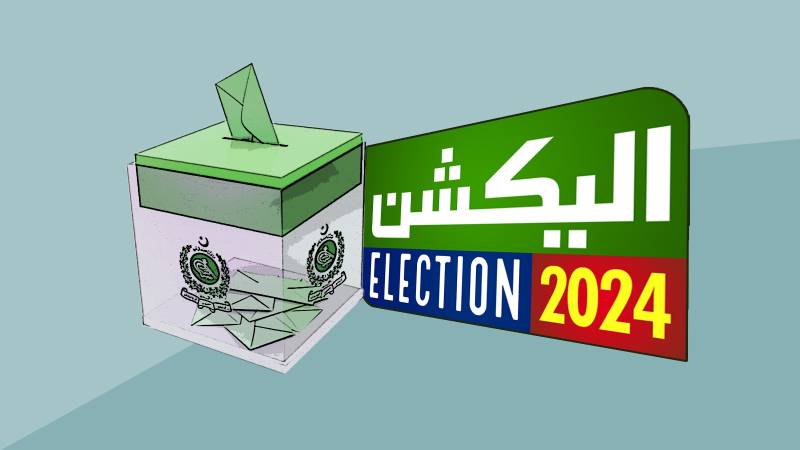
In the wake of the COVID-19 pandemic, nearly 120 million people were pushed into vulnerable situations and we witnessed a great need for more community engagement and participation across the board. Coupled with domestic economic instability, political upheaval, countries in transitional democracies have borne disproportionate burdens. Over the years, there has been a conversation that has been missing from the development space, and especially in women’s development, that has the potential to bridge the gap between scholars and practitioners.
As we collectively find ourselves rebuilding back from the pandemic, it is imperative that we re-imagine the term “inclusion”, which we can tend to casually throw around in the policy world, especially when it relates to leadership, engagement, and participation. As Pakistan prepares for general elections in 2024, fostering women's empowerment through leadership and participation in political parties will be critical. Political parties play a vital role in bringing women forward as candidates and into positions of political leadership. However, women in Pakistan continue to face obstacles within political parties that restrict their participation.
We need to better understand and re-learn what access means and the role of agency because the challenges and barriers to securing representation are evolving and we need to evolve and utilize the knowledge and resources as we collectively rise up from one of the most devastating health and economic crises of our time. We need to make sure that we intentionally carve out space for women and girls within that core decision making and leadership space as we “rebuild back better.”
All women are changemakers in what they do. Realizing that we need to utilize stakeholder approaches to foster partnerships that we can navigate and harness power dynamics is of the utmost importance. We can leverage information communication technologies to provide necessary resources and access needed for women to help become active changemakers within the political sphere.
The severity of the gender gap also applies to women being barred from voting through informal agreements between political parties and male leaders. The gap of even millions of women in voter registration compared to men leads to further exclusion from the democratic process and citizenry.
When focusing on the role that political parties have in increasing women’s political leadership it is seen that there is much progress that can be achieved. Some of the obstacles that these women face inside political parties that can be highlighted, include a lack of substantive positions of power for women within political parties. Positions of power in political parties can often be informal, centralized, and supported by well-established relationships and networks of influence that are inaccessible to new arrivals, and particularly women.
Pakistan’s political parties have made a number of superficial efforts to increase the number of women involved in politics, such as women’s wings without statutory authority or sway; the selection of the so-called female placeholders on candidate lists; the marginalization of female officials once they are elected; placing women in unelectable districts as candidates, or removing women from viable positions on candidate lists at the last minute.
Political parties’ structure may also severely restrict women’s substantive representation in the political processes, creating a long gap in women’s actual and true representation (the fact that women are involved in a political movement before it becomes a party does not guarantee them a seat at the top table). The severity of the gender gap also applies to women being barred from voting through informal agreements between political parties and male leaders. The gap of even millions of women in voter registration compared to men leads to further exclusion from the democratic process and citizenry.
Of course, these draw clear issues with the obstacles that women continue to face and struggle through in political participation. The multitude of challenges confronting women who wish to enter politics and join political parties can be addressed through a diversity of measures at various levels and entry points of the electoral process.
In recent years, the tumultuous political and economic environment in Pakistan has pushed women to engage in conversations at the local level, through community organizations because we know that women and girls, especially from vulnerable communities, are disproportionately affected by the lack of stability.
The reality that is being observed is that women do not have access to decision making and are not included in the leadership corridors.
But when we talk about local participation, we must recognize that women do not have access to these very local conversations around health, childcare, dialogue on food, education, and labor markets.
The reality that is being observed is that women do not have access to decision making and are not included in the leadership corridors. And because of societal norms, women who are committed to having their voices heard are also navigating everyday commitments like childcare. If women are not in the rooms to vote or influence voting on issues like the women friendly plans and frameworks, those national, regional and international frameworks will continue to sit on shelves collecting dust and not gaining traction.
When observing party inclusion, examples of party measures can be formal quotas for women's participation and leadership roles within parties, strategic alliances between women and supportive male mentors and leaders, fundraising support for women candidates, reforms to party processes and institutions to be more gender equal, cross-party collaboration between women, leadership roles for women on key party committees and decision-making and policies to increase women's electability through candidate list management.
With concerted efforts by political parties to implement inclusive policies and practices, Pakistan can work towards greater gender equality in political participation and leadership. The 2024 election provides an important opportunity to transform women's engagement and empowerment in the political sphere.

